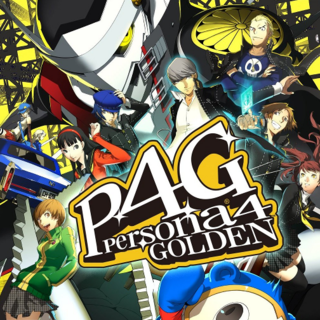There's nothing better than finding something new when returning to your hometown; a few new places to hang out and even, if you're lucky, some new friends. The additions made to the already memorable Inaba in Persona 4 Golden are enough to turn this into a brave new world. From dungeons, to improved graphics, mechanics and storylines, Golden breathes new, OLED bright life into an already colorful experience.
Series veterans will recognize the battle and dungeon systems from the vanilla 4 experience, turn based, elemental and scaled to constantly challenge and require character growth. The dungeons of Persona 4 Golden are a rare moment of unbridled fun. Weaving story and the occasional pitfall to these adds just enough variety to break the monotony of the monster encounters, but where the battle experience is revamped most is in the "Arcana Chance" mini-game. As a bonus after most battles, a slew of cards with Personae (the series' monsters of choice), Major Arcana cards (which benefit or detriment the player's efforts) and the reintroduced Minor Arcana, which give bonuses to money, experience, health and SP (read: magic) and new skill cards, which act similar to the Pokemon series TMs, which teach moves one time only. The very basis of how you pick the cards has been radically changed, from a swirl not unlike three card monte, to now a face up, pick-as-you-please list of cards. This eliminates any element of randomness, which may or may not be a blessing to players. Skillful players will be able to sweep all cards available, and begin next chance with more choices.
Also added are new Social Links, the heart blood of Persona outside of the dungeon. These storylines, for the uninitiated, are ten part vignettes into supporting and major character lives, themed around each Tarot card, which flesh out a massive amount of development and personality. Whereas most JRPGs and role playing games in general rarely get to showcase a diverse cast to completion, each Social Link in P4G is invariably well written, with love interests, fellow students and former strangers coming to fruition. In a genre labeled for its ability to make players into their characters, Persona shines brightly, as a prime example of silent protagonists to develop at your choosing. On the quality of the new Social Links, they are written to be at the same quality as the originals, and fit perfectly into the new story sequences. They consist of Marie, a mysterious and jaded girl you meet immediately in town, and Tohru Adachi, the rookie partner of your detective uncle. On the latter, more character interaction was wanted by the fans, given his proximity to the main story, and on Marie, who was written in from the ether, she earns her spot quickly as a key to improving and furthering the story. Where remakes usually are content with new graphics, Atlus decided to add more game; and with Persona, there should always be more game.
On the mentioned new graphics, Atlus also did its best to bring a late PS2 game to its little handheld that could brilliantly. 16:9, HD graphics, coupled with new, smoother models and animations make a now flat classic into an eye-popping experience. The Vita was the perfect platform for this IP, marking one of few must haves in the library, alongside other niche, but recognized JRPG series. Sony may have extended the life of the Vita simply by announcing this and with its immaculate release, in a rare show of faith in its handheld market.
Persona 4 Golden is a lot of things to a lot of people. To fans, it is another chance to visit their precious Inaba and get some more out of it each time they come back (New Game Plus brings so much ruckus). To Atlus, it is a chance to show they have plenty of ammo for upcoming Persona titles, and a know how of current generation games. To developers, it is a blueprint for how to make a remake not only viable but fun and better, as the original Persona 4 was a blueprint for how to make a game fun in the first place.

